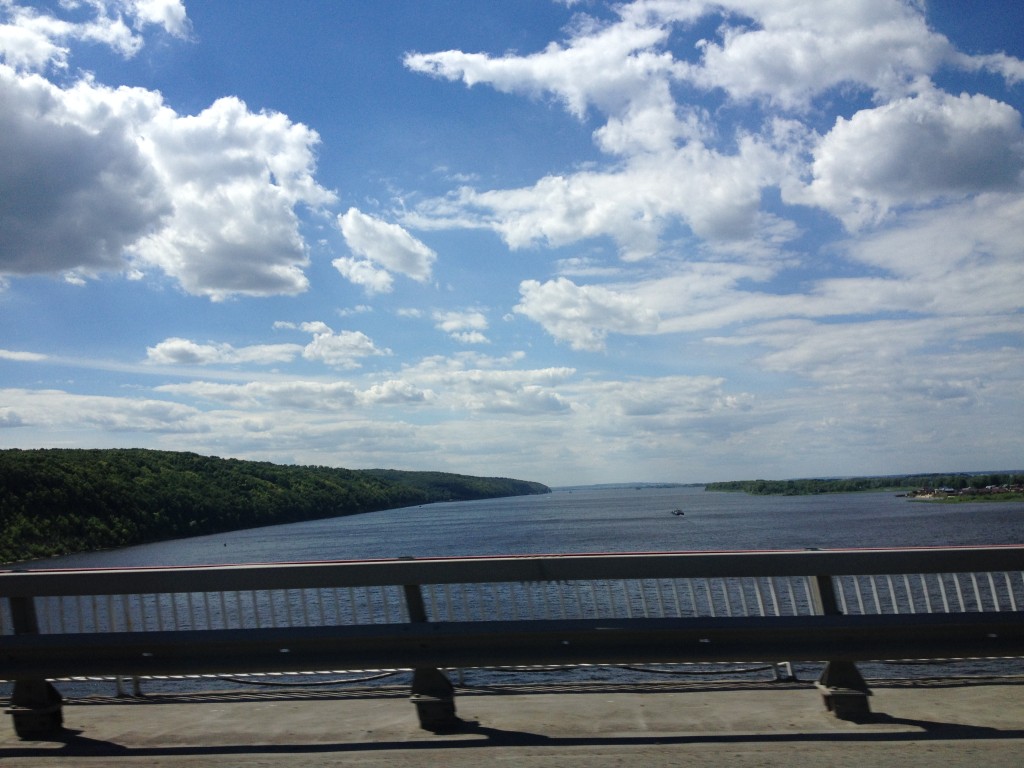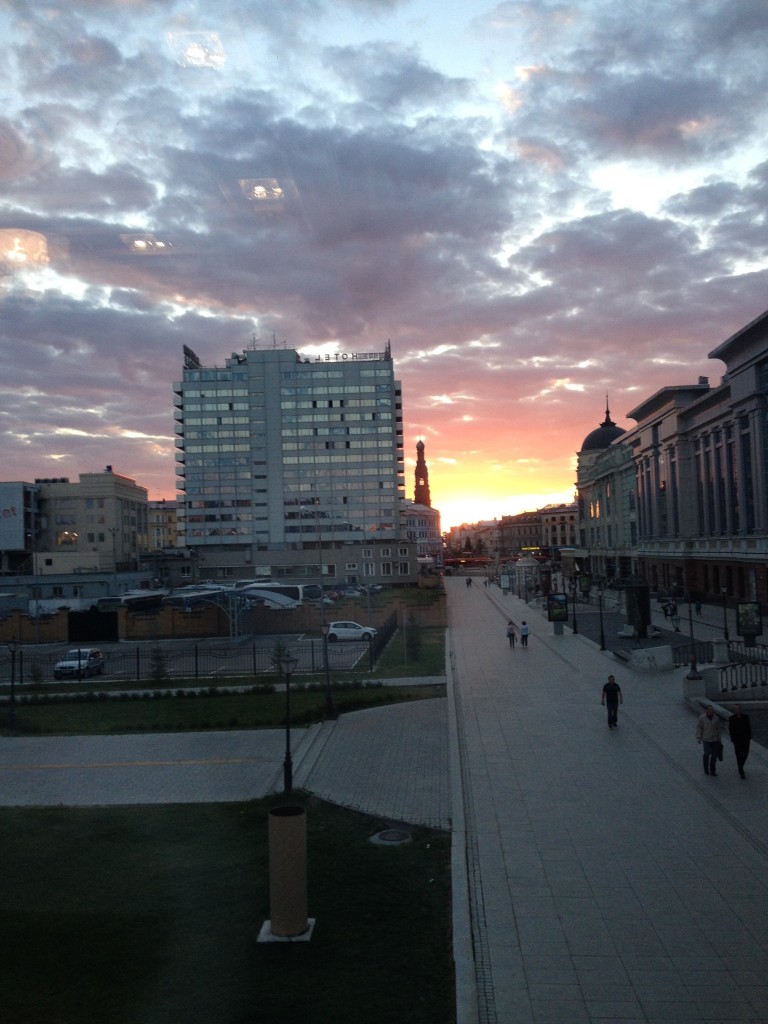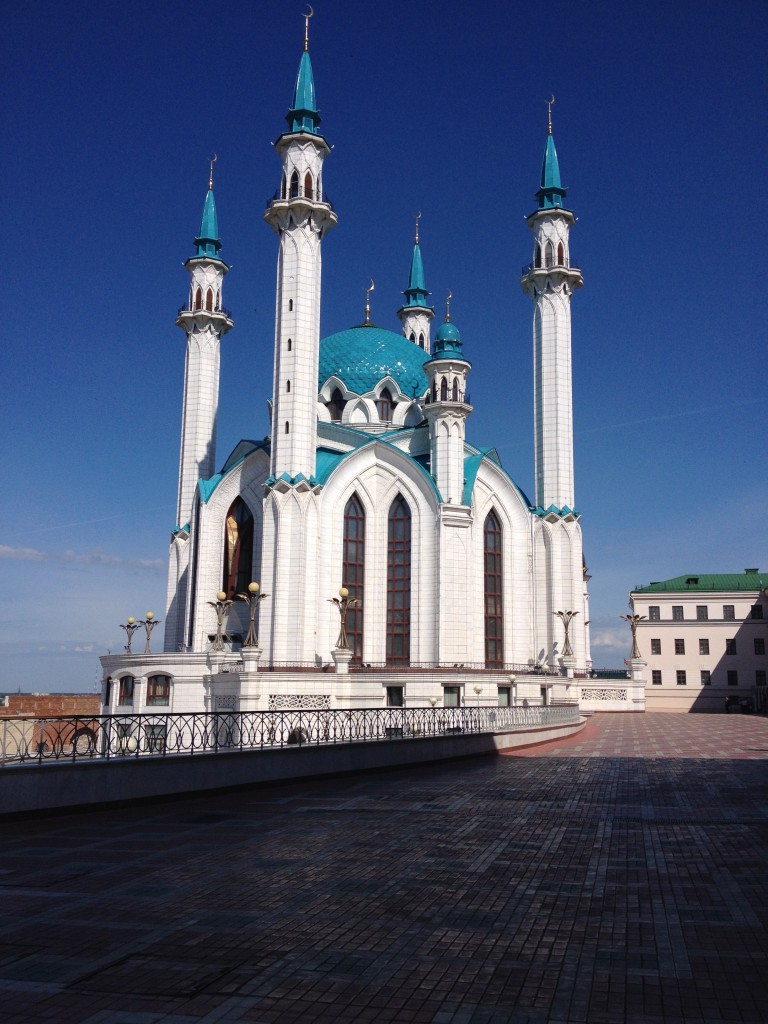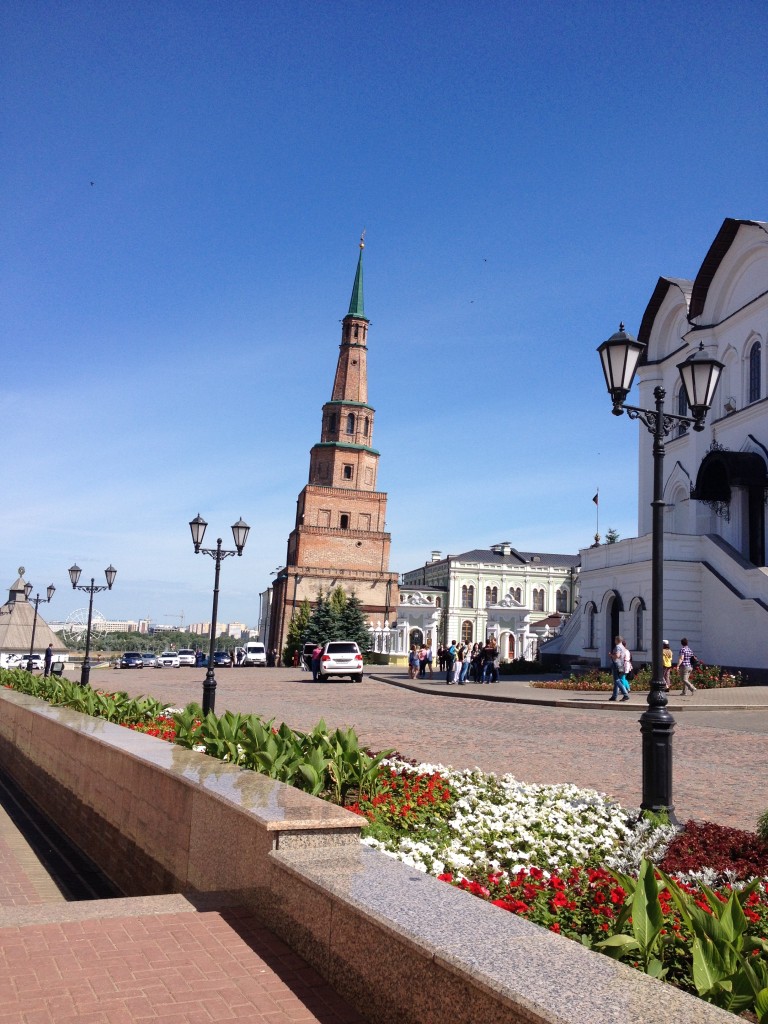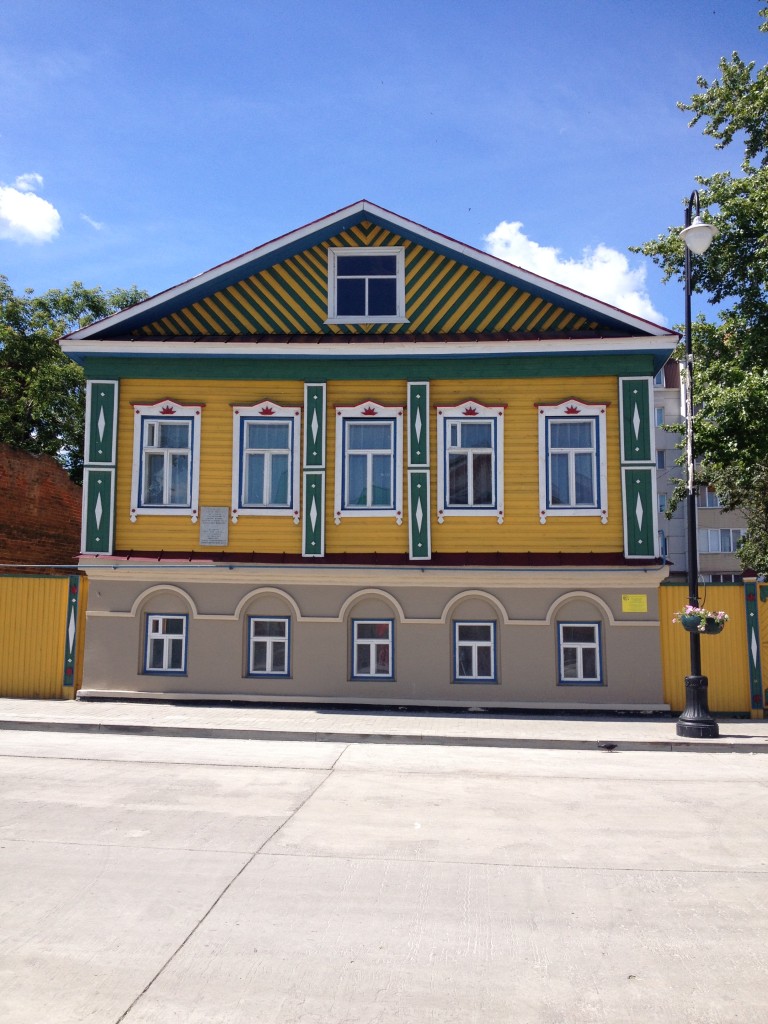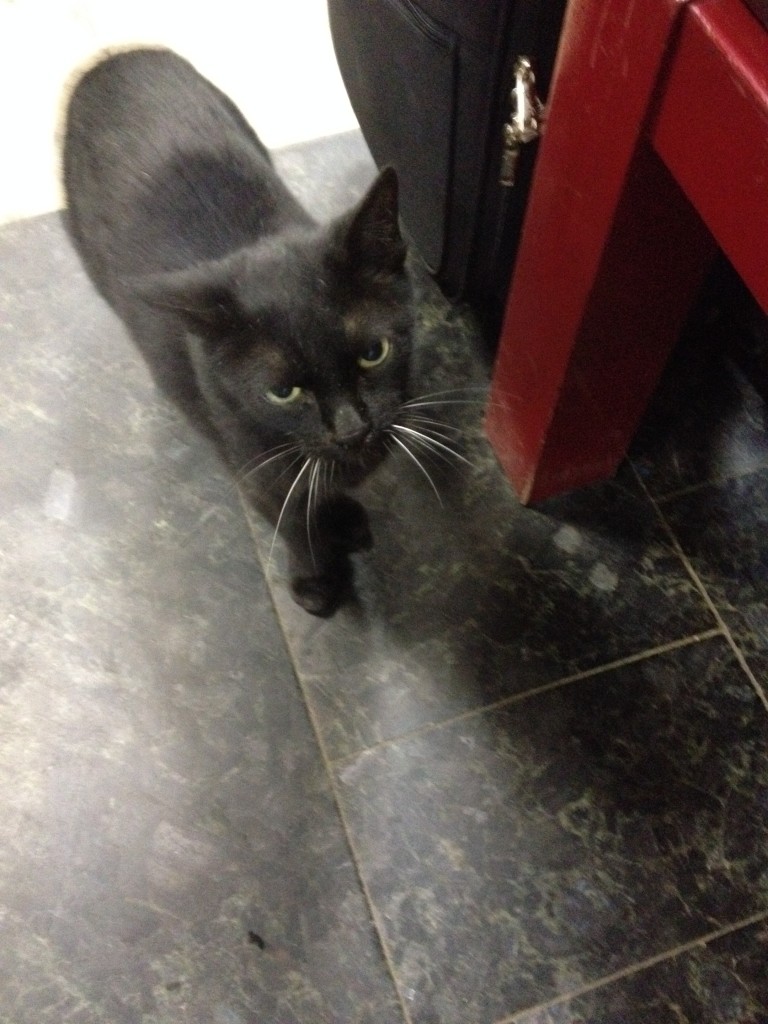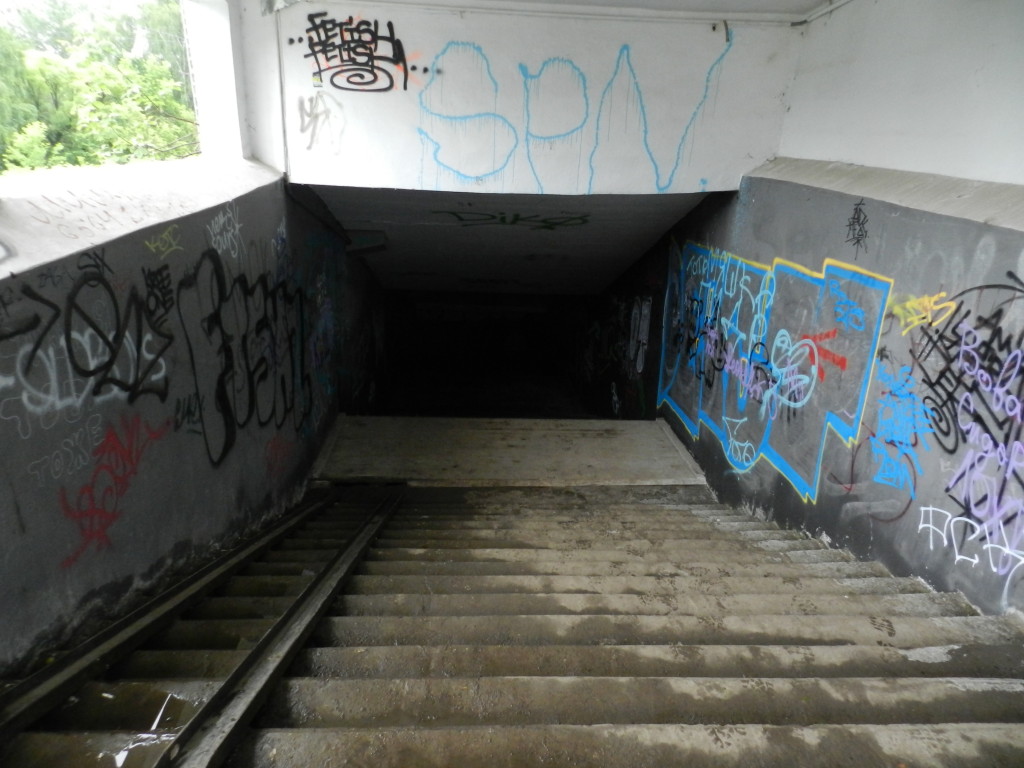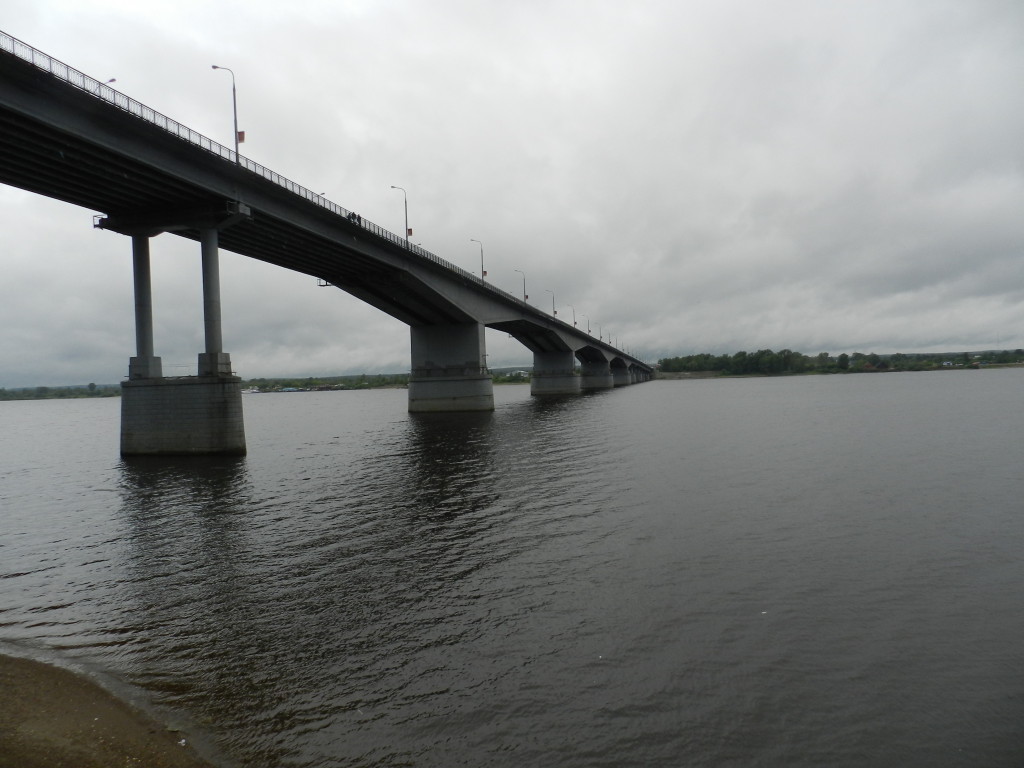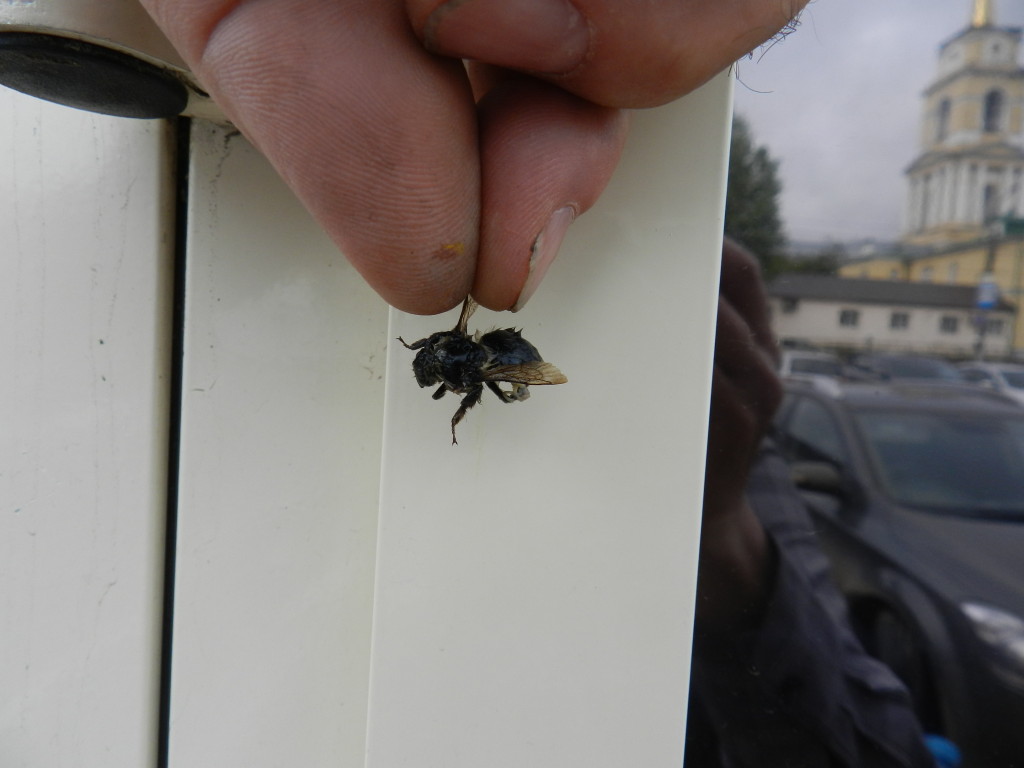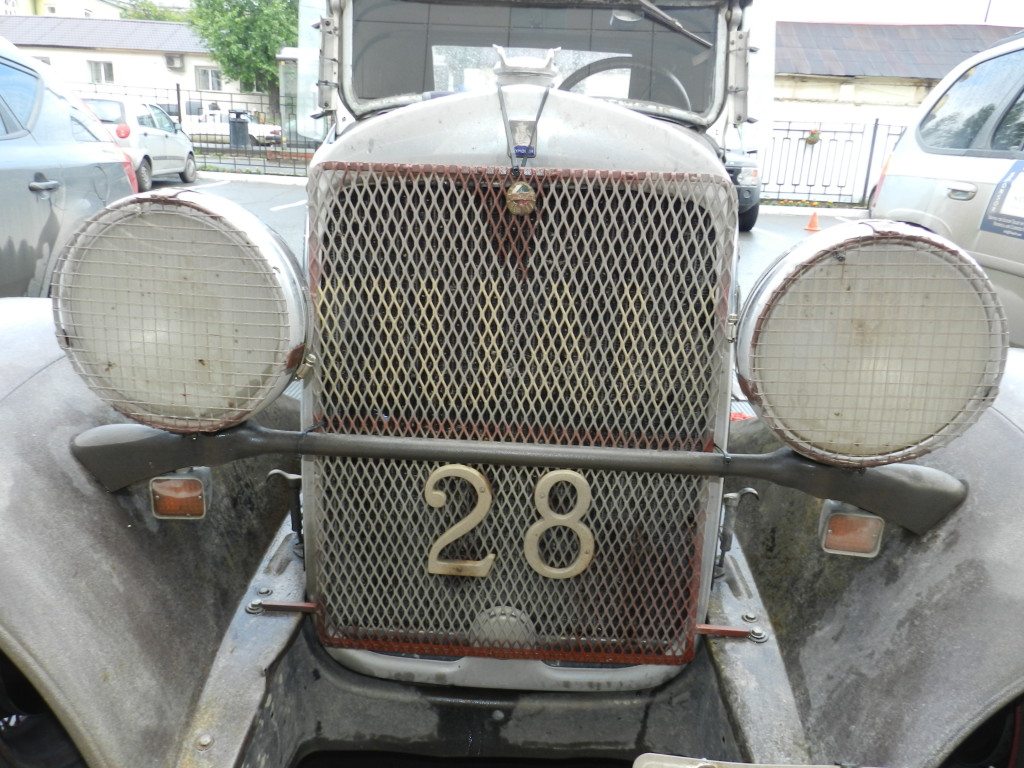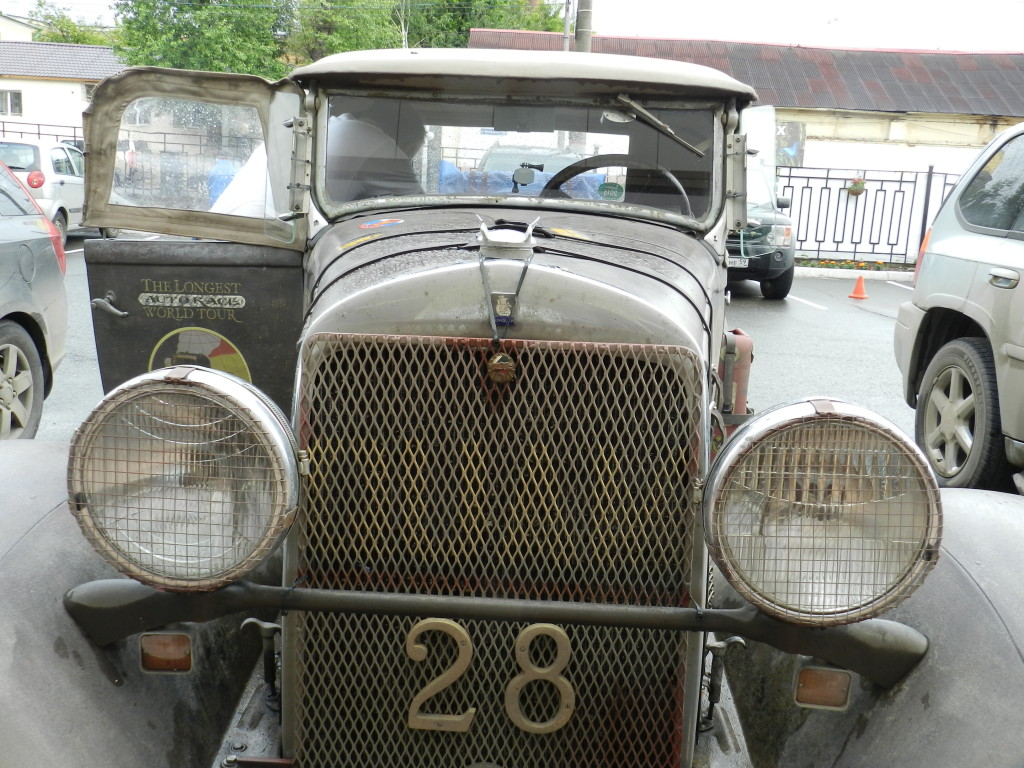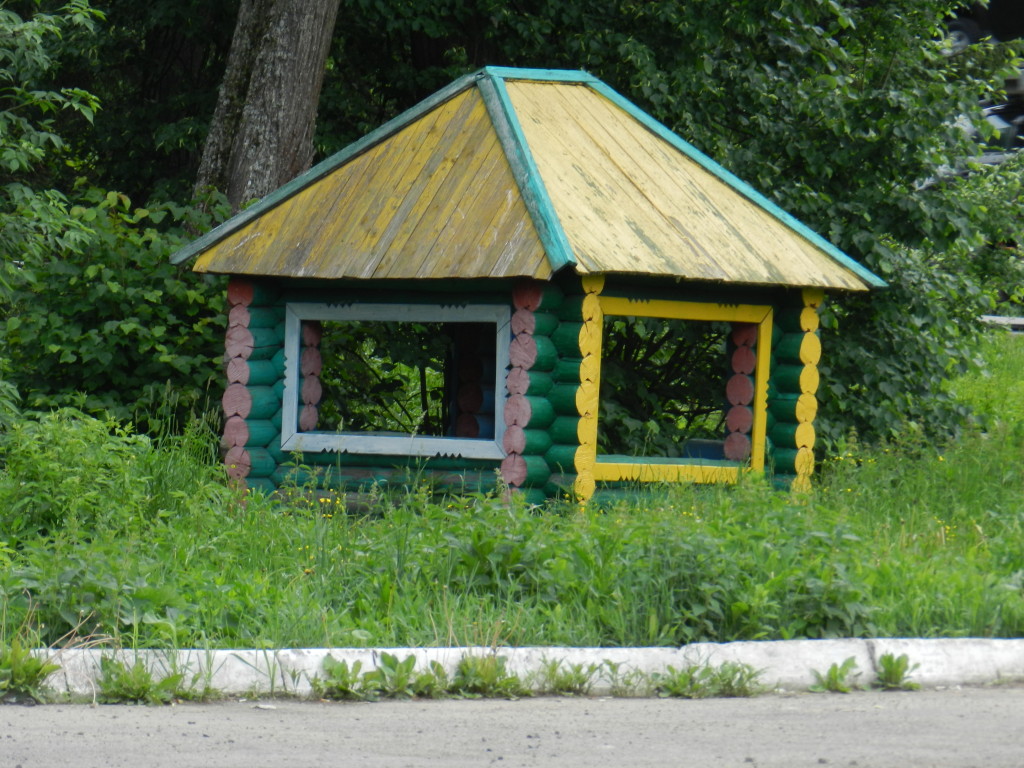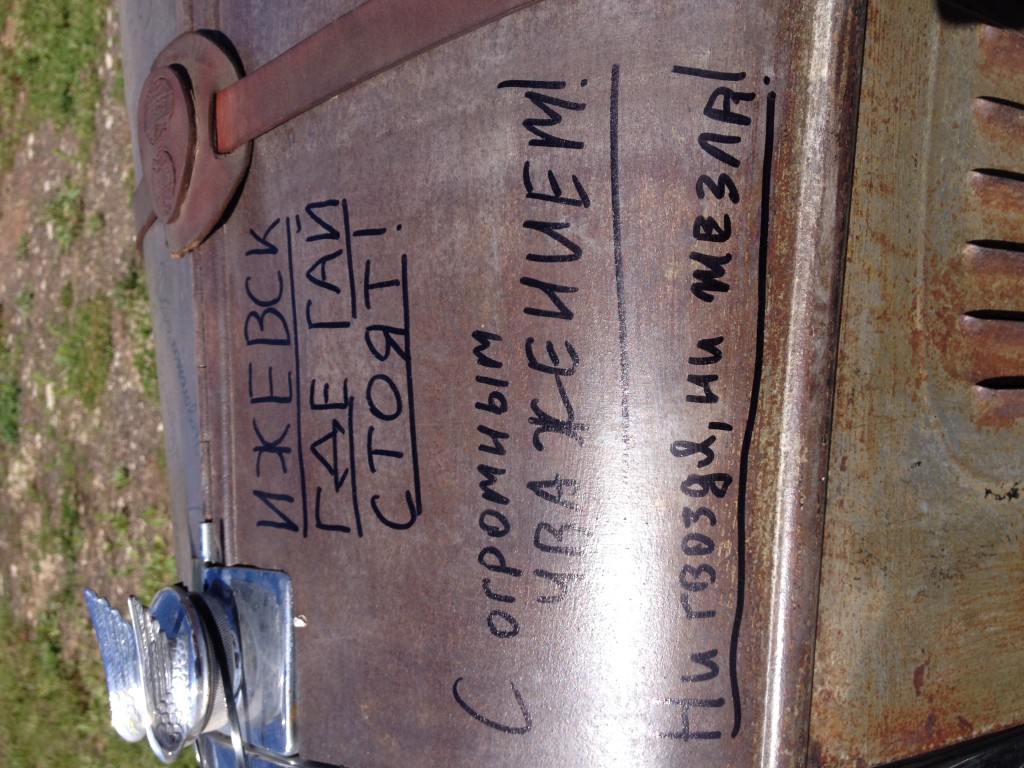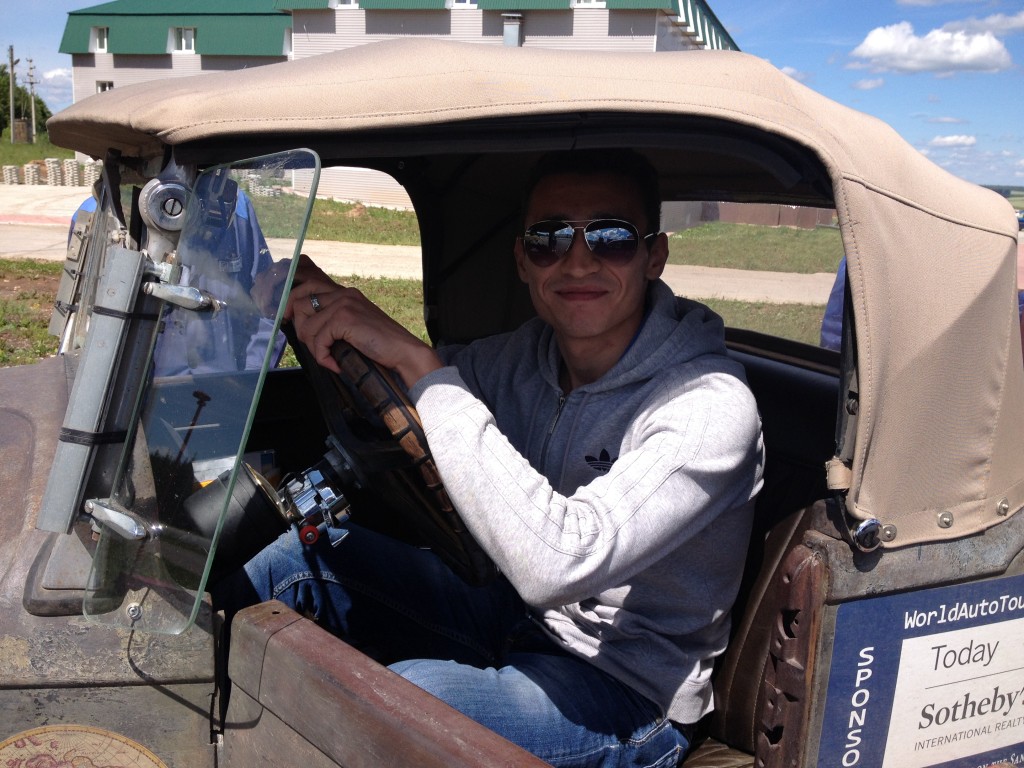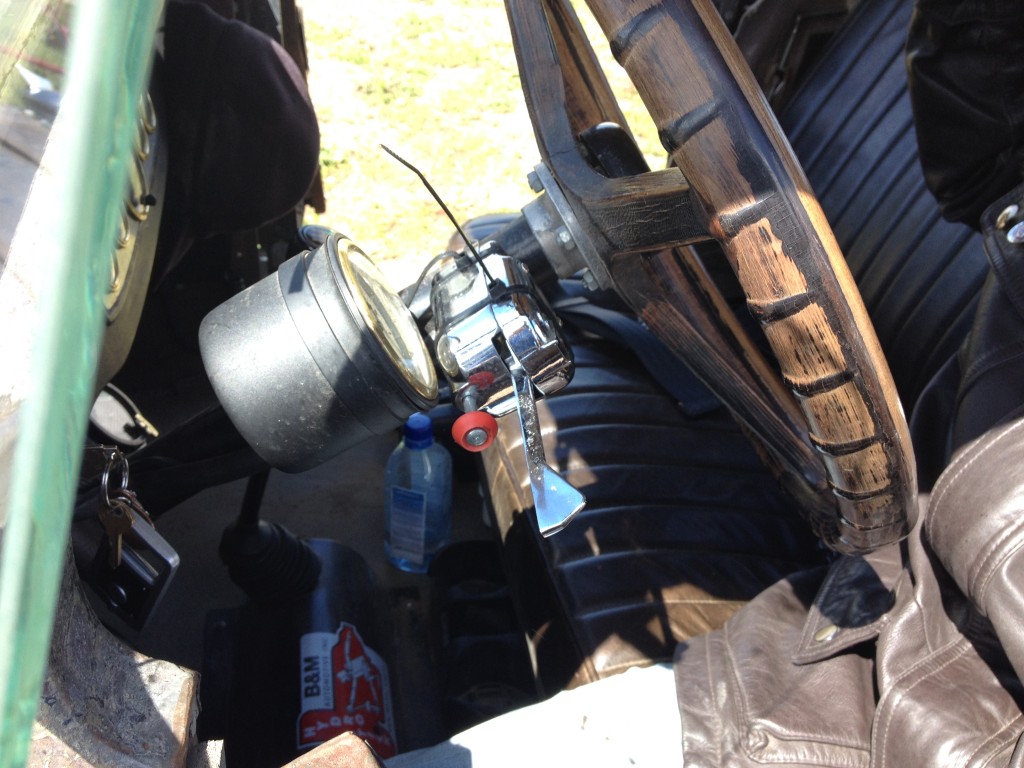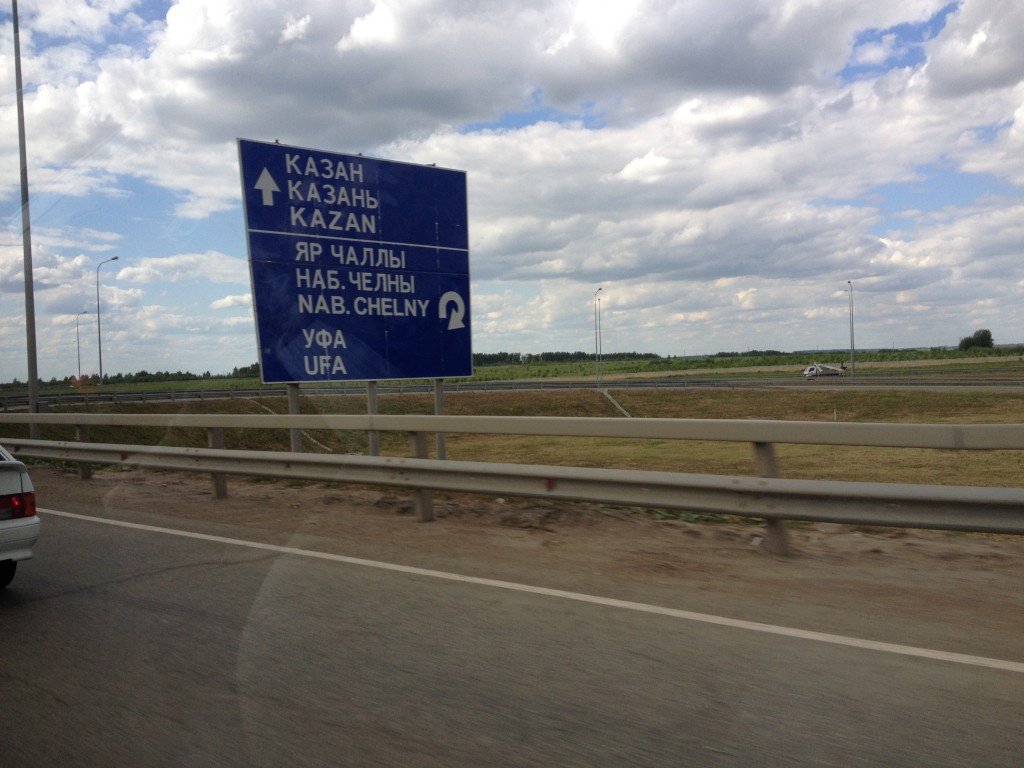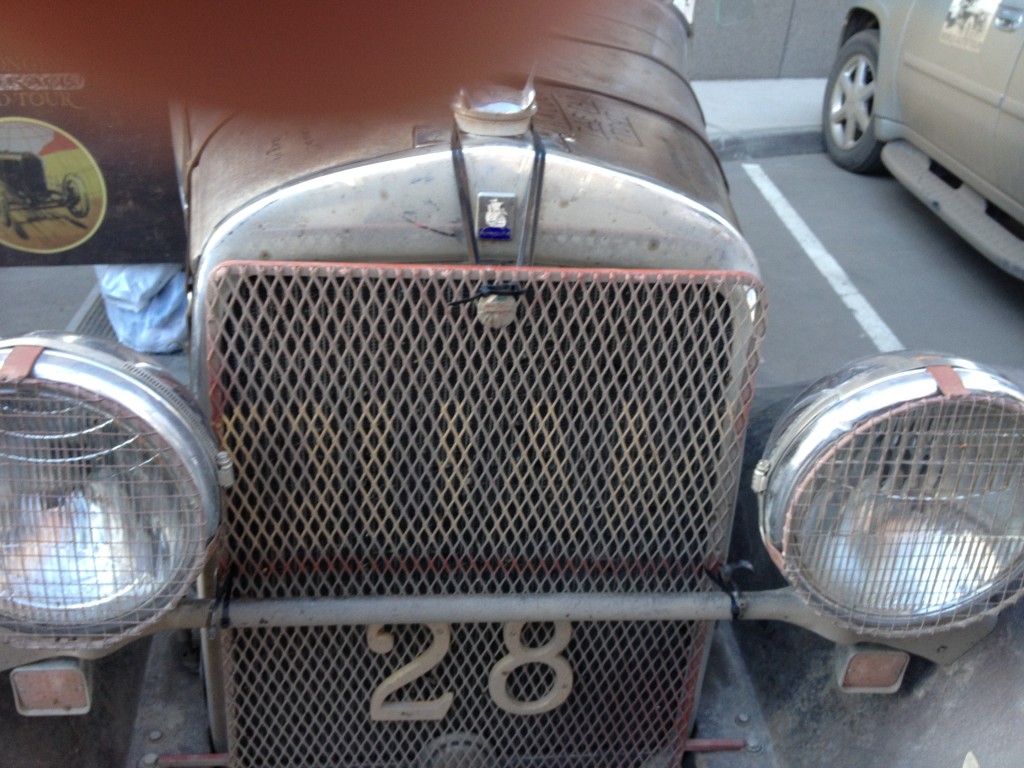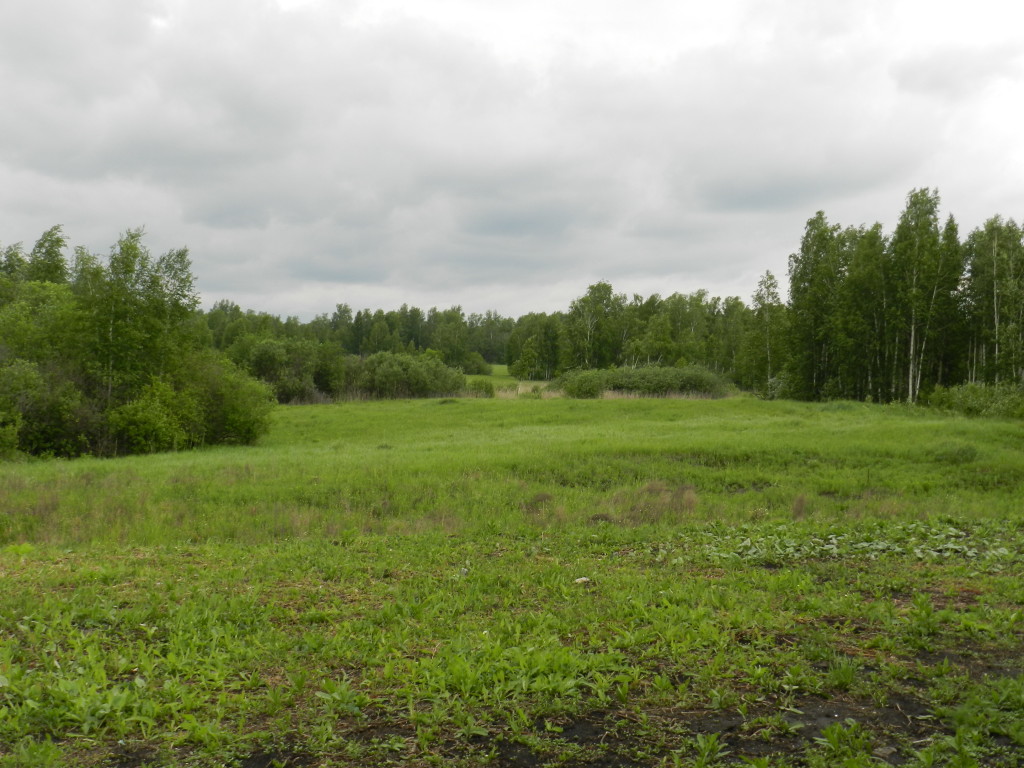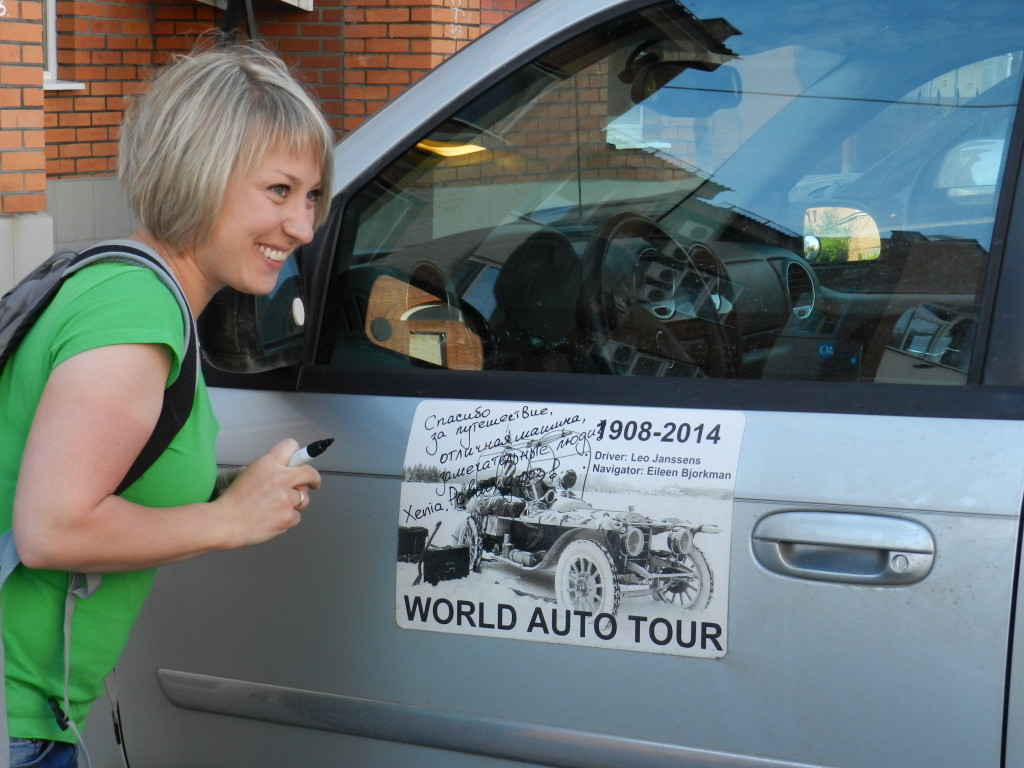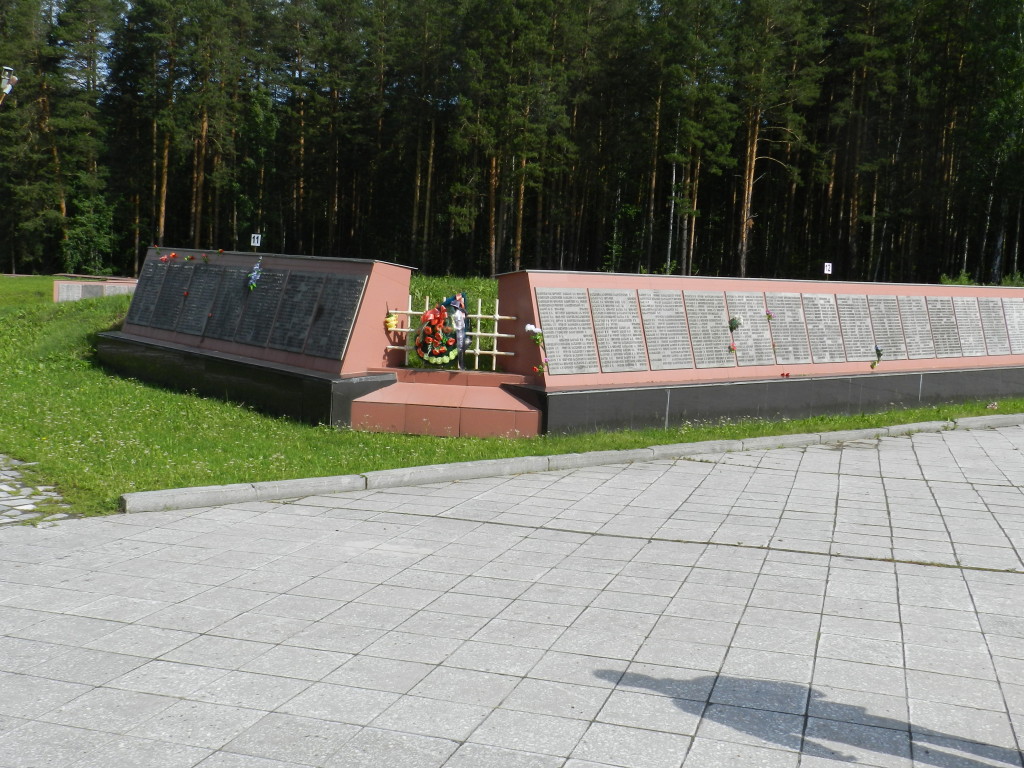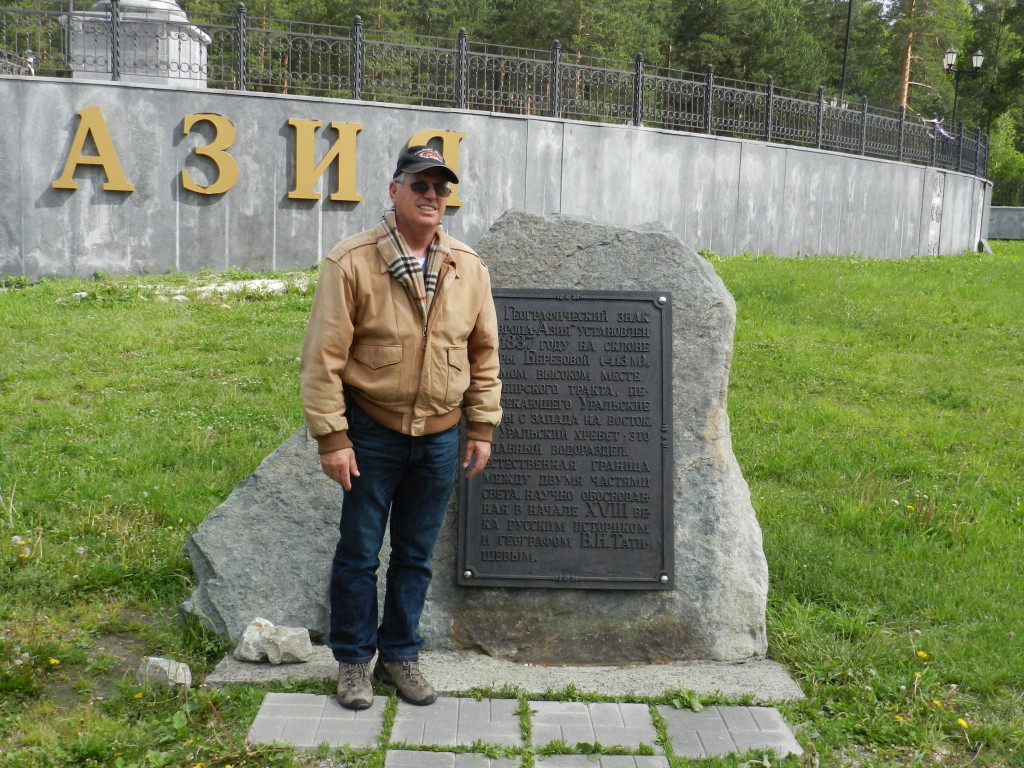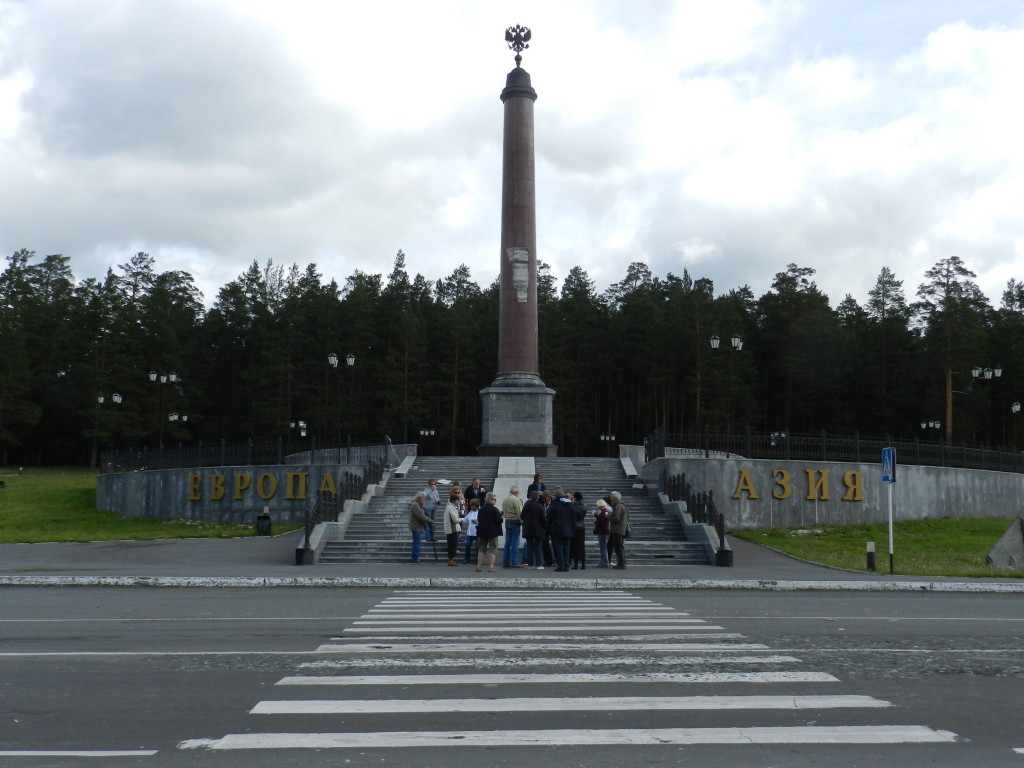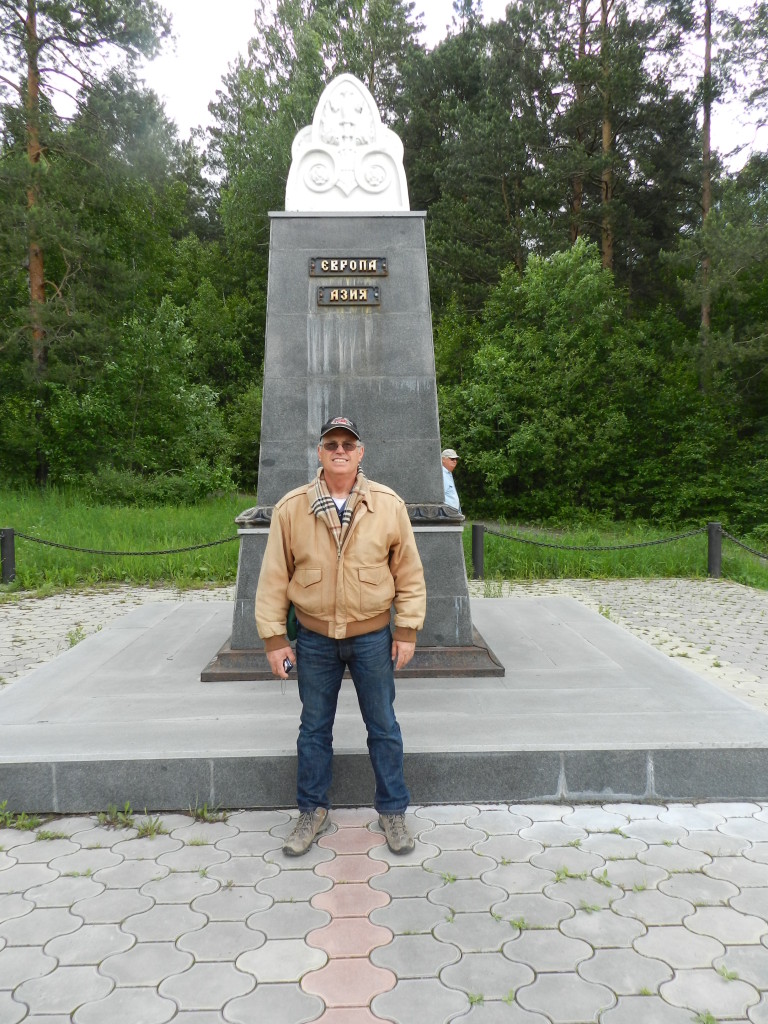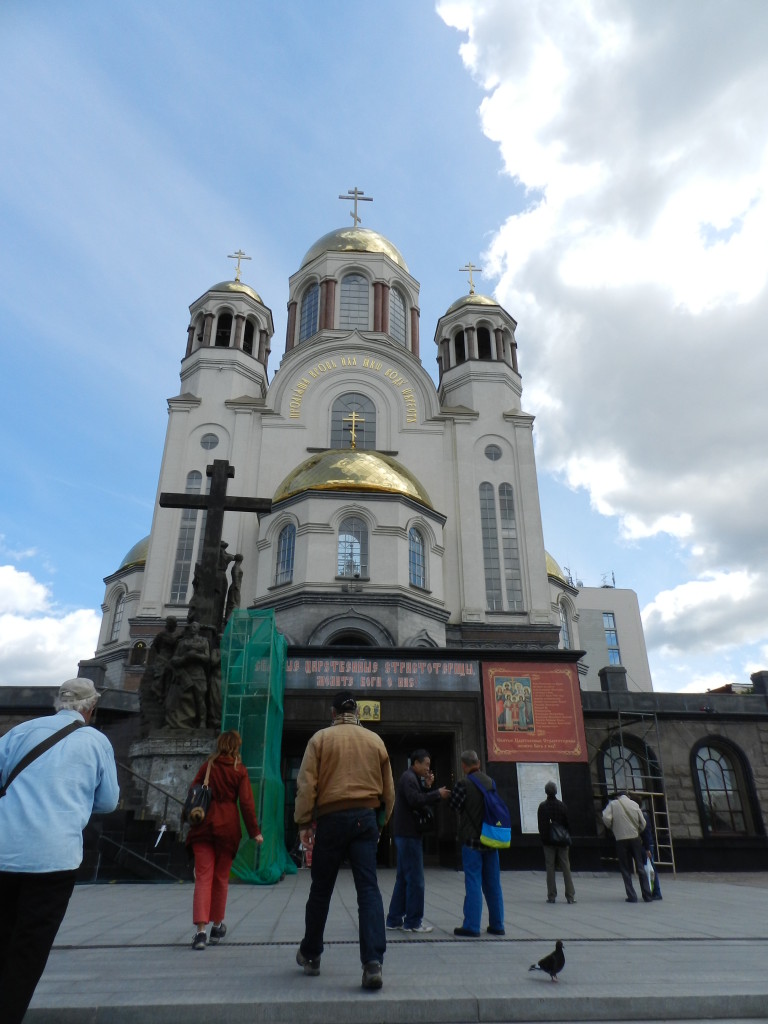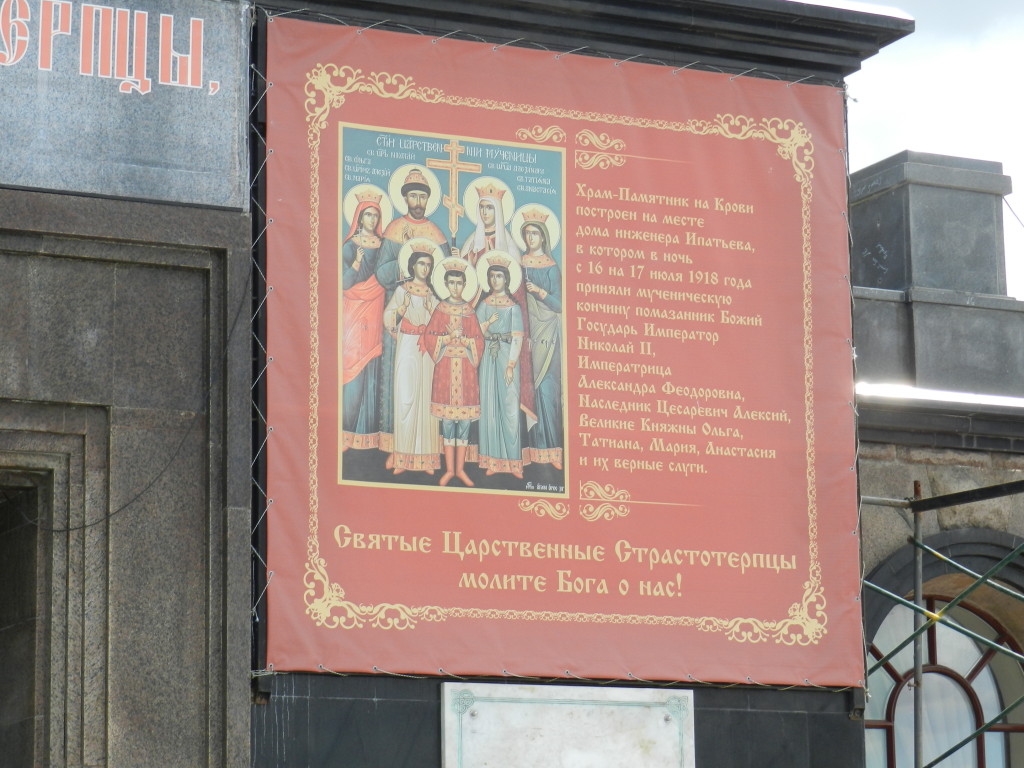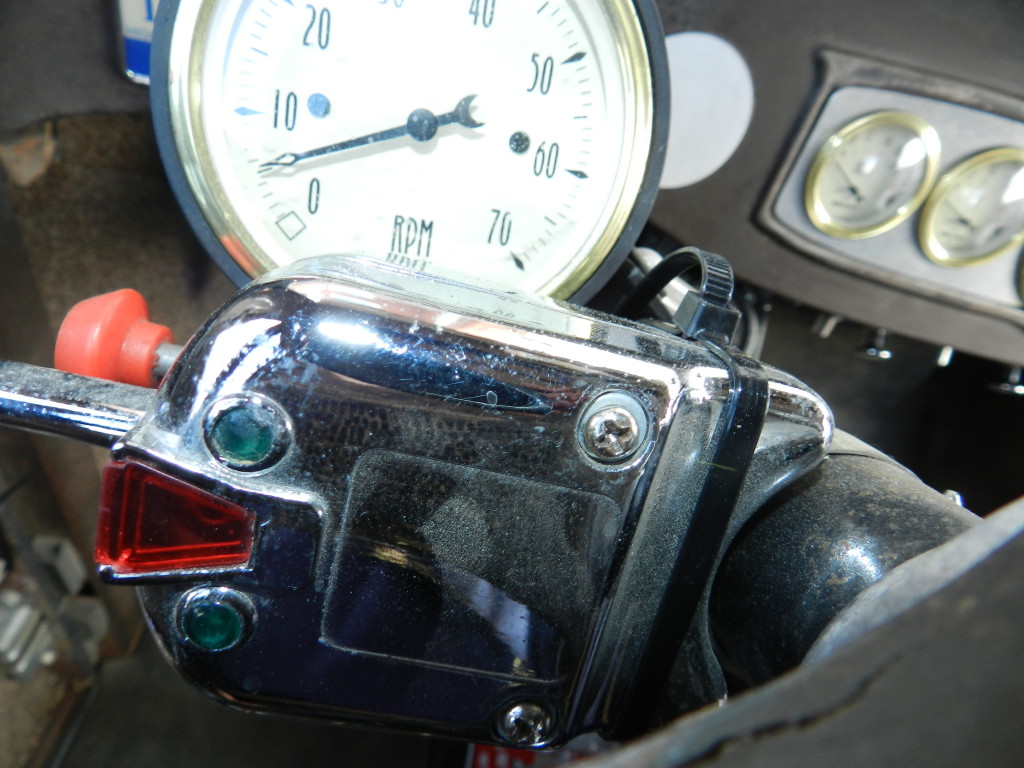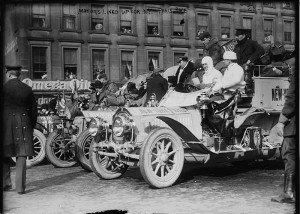Number of tie wraps: 29 (holding steady)
Countdown: 5971 miles down, 2614 to go
Quote of the day: “I’m shocked that there is a jam on a federal road between two cities.” Natalia, our guide, after we had been at a dead stop for 30 minutes in a construction zone during our drive today.
The roads today were good overall, but it took us 8 hours to drive 240 miles, mostly due to construction delays on the M7 road between Kazan and Nizhny Novgorod. We had some nice views of the Volga River (called the Nile of Russia) on our way out of town. The photo below is looking to the north, but looking to the south, I saw the skyline of Kazan and it reminded me of the view of Washington DC from the Woodrow Wilson Bridge across the Potomac River.
Kazan is in the Tatarstan region of Russia, so for dinner last night, I tired a traditional Tatar dish, a delicious appetizer that was similar to a potato pancake. We also viewed a gorgeous sunset from our dinner table.
This morning, we set out at 9 a.m. for a Kazan city tour. First, we headed to the Kazan Kremlin, a UNESCO World Heritage Site, where we saw a mosque that was rebuilt in 2005 — the original mosque had been destroyed during the Soviet era.
We also saw this leaning tower in the Kremlin — Syuyumbike Tower. it’s not as famous as the Leaning Tower of Pisa, but it leans almost as much.
Since kremlin means fortress, you might expect that it would provide a nice view of the city, and it didn’t disappoint. I hope the panorama from my iPhone does it some justice.
At one time, Kazan was divided into a Tatar section and a Russian section, but these days Russians and Tatars mix freely. The house below is in the old Tatar section and is typical of Tatar architecture — notice that the whole house is painted, not just the shutters like many traditional Russian houses.
After driving the last two hours this evening through rain, we arrived at our hotel in Nizhny Novgorod about 9:15 p.m., where we were greeted by the hotel kitty cat.
The hotel is located at the top of a hill overlooking the city, and if the weather is good tomorrow morning, we should have some nice Nizhny views before we leave for Moscow, about a 418 km drive. One last thing — there won’t be any new Roadster shocks waiting for us when we arrive in Moscow tomorrow — the latest plan failed as well. With the better roads we have now, replacing the shocks isn’t as important as it was, but Luke still has some ideas, so stay tuned!
